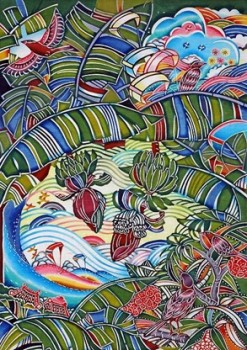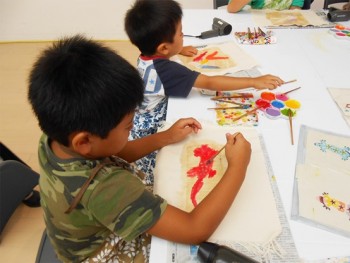Mecenat Activities
Bank of The Ryukyus, Ltd
- Purpose:Local Promotion by Culture
- Other Purpose:
- Genre:Traditional industrial arts
Beautiful multicolor dyed patterns make Bingata textiles one of the most attractive of Okinawa’s traditional crafts. Based on Asian dyeing techniques learned in the 14th-15th century, and influenced by Kyo-Yuzen dyeing from Kyoto, Bingata developed along with the prosperity of the Ryukyu dynasty. More recently, however, the number of Bingata artists declined, and fewer young people were willing to take up the craft.
In 1992, to mark its 45th anniversary and the 20th anniversary of Okinawa’s reversion to Japan, the Bank of The Ryukyus inaugurated a Bingata Design Contest. Before then, the bank had depicted Bingata in its calendars for many years, but the adoption of a contest format had the dual effect of training young artists and encouraging
attempts to push Bingata design into new areas.
The contest was open to all entries using the Bingata technique, regardless of whether the artist was a professional or an amateur. In 2013, in addition to its General Division, the contest gained a Future Division for students up to the age of 20, broadening its scope to cover a greater range of ages. All entries are exhibited at the Okinawa Prefectural Museum & Art Museum, and Bingata workshops are held while the exhibition is in progress. Each year, the bank purchases the winning and shortlisted entries, and in addition to putting on an exhibition that tours its main branches, makes wide-ranging use of images of the textiles on its calendars and on items like passbooks and cash cards that customers used every day. Works are also exhibited on display panels and the like inside bank branches, including a dramatic display wall at the head branch covered with Bingata works, which are changed every few years.
The bank has also made some of these Bingata works and designs available for the use of other businesses in Okinawa, offering 110 prizewinning items from the period up to 2009. The first example was the much-anticipated kariyushi wear incorporating motifs from prizewinning works. In addition to supporting the continuance of traditional techniques, the program will continue to open new doors and provide vivid new opportunities for Bingata.



